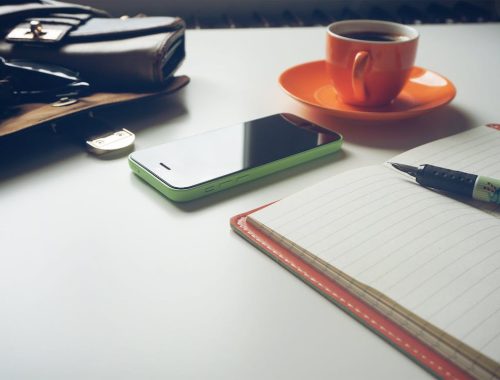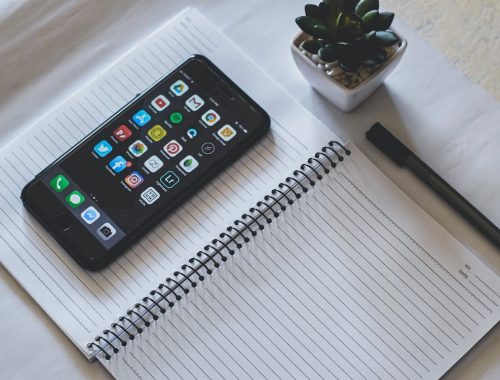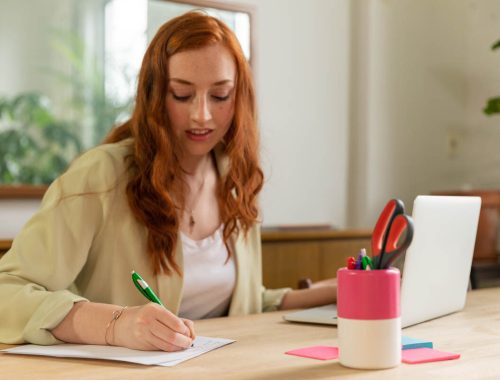Boosting Classroom Learning: Effective Strategies Revealed
In today’s fast-paced and highly competitive world, the need for effective learning in the classroom has become more crucial than ever. As educators, it is our responsibility to ensure that our students are equipped with the necessary knowledge and skills to excel in their academic and professional pursuits. However, traditional teaching methods are no longer sufficient in meeting the diverse needs and learning styles of students. In order to maximize student learning and create an ideal classroom environment, it is essential to adopt effective strategies and instructional techniques. In this article, we will explore the key factors and optimal methods for enhancing classroom learning and providing students with the tools they need to succeed.
When it comes to learning in the classroom, teachers play a crucial role in creating an environment that promotes effective learning. It is essential for educators to constantly evaluate and improve their instructional strategies to maximize student learning. In this article, we will discuss some key strategies for effective learning in the classroom, including creating an ideal learning environment, utilizing instructional techniques, and incorporating technology.
Creating an Ideal Learning Environment
The first step to enhancing student learning in the classroom is to create an ideal learning environment. This involves creating a safe, positive, and inclusive space where students feel comfortable to ask questions, participate in discussions, and take risks in their learning. A positive and supportive atmosphere can significantly impact a student’s motivation and willingness to learn. Here are a few ways to achieve this:
- Establish clear expectations: Setting clear guidelines and expectations can create a sense of structure and routine in the classroom. This helps minimize disruptions and provides students with a sense of security.
- Encourage collaboration: Students can learn from one another and build important social skills through group work and collaboration. Encouraging teamwork and creating opportunities for peer-to-peer interactions can improve student learning.
- Provide a variety of learning spaces: Not all students learn in the same way or prefer the same environment. By providing different learning spaces, such as a quiet reading corner or a collaborative group work area, students can choose the setting that works best for them.
Creating an ideal learning environment is not just about the physical space, but also the emotional and psychological factors. Teachers should strive to build positive relationships with their students, maintain a positive attitude, and be open to feedback from their students in order to create a comfortable learning environment for everyone.
Utilizing Instructional Techniques
Effective instructional techniques play a vital role in maximizing student learning. Here are some strategies that can help improve classroom learning for students:
- Hands-on learning: Incorporating hands-on activities and experiments can greatly enhance student engagement and retention of information. It provides students with a more concrete understanding of complex concepts and allows them to apply their knowledge in practical ways.
- Active learning: Rather than relying solely on lectures, teachers can engage students in active learning by incorporating discussions, debates, and group work. This encourages critical thinking, problem-solving, and collaboration.
- Personalized learning: Every student learns at a different pace and has unique learning styles. By implementing personalized learning techniques, such as differentiated instruction and individualized assignments, teachers can meet the diverse needs of their students.
- Real-life connections: Students are more likely to be engaged and interested in a topic when they can see its relevance in the real world. Teachers can make connections between the subject matter and current events or students’ personal experiences to make learning more meaningful.
It is important for teachers to regularly reflect on their instructional methods and adapt them to best suit their students’ needs. By being flexible and trying out new techniques, teachers can keep their lessons fresh and engaging for their students.
Incorporating Technology
In today’s digital world, technology has become an essential part of our daily lives. Therefore, it is crucial for teachers to utilize technology in the classroom to create a more interactive and engaging learning experience. Incorporating technology can also help students develop important skills that are necessary for success in the 21st century. Here are a few ways to integrate technology into the classroom:
- Online resources: The internet is a vast source of information and provides students with access to a variety of resources. Teachers can utilize online platforms, such as Radford University’s website, to provide students with additional learning materials and activities.
- Interactive learning tools: There are many educational apps and software programs that can make learning more interactive and engaging for students. These tools can be used for practice, quizzes, and games to reinforce and assess learning.
- Virtual field trips: With the help of technology, teachers can take their students on virtual field trips to places they may not be able to visit in person. This provides students with a unique learning experience and can spark their curiosity and interest in a subject.
However, it is important for teachers to balance the use of technology with traditional teaching methods. Too much screen time can have negative effects on students’ attention span and overall well-being. Teachers should also ensure that all students have equal access to technology to prevent any disparities in learning opportunities.
Key Factors for Successful Classroom Learning
Along with creating an ideal learning environment, utilizing effective instructional techniques, and incorporating technology, there are a few other key factors that contribute to successful classroom learning. These include:
- Positive reinforcement: Recognizing and acknowledging students’ efforts and achievements can boost their self-confidence and motivation to learn.
- Effective communication: Clear and open communication between teachers, students, and parents is vital for the success of classroom learning.
- Regular feedback: Providing students with timely and constructive feedback helps them understand their strengths and weaknesses, allowing them to improve their learning.
- Continuous learning: Teachers should be lifelong learners and constantly seek out new techniques and strategies to improve their teaching methods.
By incorporating these key factors into their teaching practices, teachers can create a successful learning environment that promotes growth and development for all students.
Conclusion
In conclusion, there are various strategies that can help maximize student learning in the classroom. By creating an ideal learning environment, utilizing effective instructional techniques, incorporating technology, and considering other key factors, teachers can help students acquire knowledge and achieve academic success. It is essential for educators to continuously evaluate and adapt their teaching practices to create an engaging and dynamic learning experience for their students.
In conclusion, there are several key strategies that can contribute to effective learning in the classroom. From creating an ideal learning environment to implementing instructional techniques, teachers have a crucial role in maximizing student learning. By understanding the key factors for successful classroom learning and utilizing optimal methods, educators can enhance student knowledge acquisition and improve overall academic performance. It is important to continuously assess and adapt these strategies to meet the diverse needs of each individual student. With dedication and determination, we can create an environment where students thrive and succeed in their educational journey. Let us strive towards continuously improving classroom learning for students and building a brighter future for generations to come.
Boosting Classroom Learning: Effective Strategies Revealed
In today’s fast-paced and highly competitive world, the need for effective learning in the classroom has become more crucial than ever. As educators, it is our responsibility to ensure that our students are equipped with the necessary knowledge and skills to excel in their academic and professional pursuits. However, traditional teaching methods are no longer sufficient in meeting the diverse needs and learning styles of students. In order to maximize student learning and create an ideal classroom environment, it is essential to adopt effective strategies and instructional techniques. In this article, we will explore the key factors and optimal methods for enhancing classroom learning and providing students with the tools they need to succeed.
When it comes to learning in the classroom, teachers play a crucial role in creating an environment that promotes effective learning. It is essential for educators to constantly evaluate and improve their instructional strategies to maximize student learning. In this article, we will discuss some key strategies for effective learning in the classroom, including creating an ideal learning environment, utilizing instructional techniques, and incorporating technology.
Creating an Ideal Learning Environment
The first step to enhancing student learning in the classroom is to create an ideal learning environment. This involves creating a safe, positive, and inclusive space where students feel comfortable to ask questions, participate in discussions, and take risks in their learning. A positive and supportive atmosphere can significantly impact a student’s motivation and willingness to learn. Here are a few ways to achieve this:
- Establish clear expectations: Setting clear guidelines and expectations can create a sense of structure and routine in the classroom. This helps minimize disruptions and provides students with a sense of security.
- Encourage collaboration: Students can learn from one another and build important social skills through group work and collaboration. Encouraging teamwork and creating opportunities for peer-to-peer interactions can improve student learning.
- Provide a variety of learning spaces: Not all students learn in the same way or prefer the same environment. By providing different learning spaces, such as a quiet reading corner or a collaborative group work area, students can choose the setting that works best for them.
Creating an ideal learning environment is not just about the physical space, but also the emotional and psychological factors. Teachers should strive to build positive relationships with their students, maintain a positive attitude, and be open to feedback from their students in order to create a comfortable learning environment for everyone.
Utilizing Instructional Techniques
Effective instructional techniques play a vital role in maximizing student learning. Here are some strategies that can help improve classroom learning for students:
- Hands-on learning: Incorporating hands-on activities and experiments can greatly enhance student engagement and retention of information. It provides students with a more concrete understanding of complex concepts and allows them to apply their knowledge in practical ways.
- Active learning: Rather than relying solely on lectures, teachers can engage students in active learning by incorporating discussions, debates, and group work. This encourages critical thinking, problem-solving, and collaboration.
- Personalized learning: Every student learns at a different pace and has unique learning styles. By implementing personalized learning techniques, such as differentiated instruction and individualized assignments, teachers can meet the diverse needs of their students.
- Real-life connections: Students are more likely to be engaged and interested in a topic when they can see its relevance in the real world. Teachers can make connections between the subject matter and current events or students’ personal experiences to make learning more meaningful.
It is important for teachers to regularly reflect on their instructional methods and adapt them to best suit their students’ needs. By being flexible and trying out new techniques, teachers can keep their lessons fresh and engaging for their students.
Incorporating Technology
In today’s digital world, technology has become an essential part of our daily lives. Therefore, it is crucial for teachers to utilize technology in the classroom to create a more interactive and engaging learning experience. Incorporating technology can also help students develop important skills that are necessary for success in the 21st century. Here are a few ways to integrate technology into the classroom:
- Online resources: The internet is a vast source of information and provides students with access to a variety of resources. Teachers can utilize online platforms, such as Radford University’s website, to provide students with additional learning materials and activities.
- Interactive learning tools: There are many educational apps and software programs that can make learning more interactive and engaging for students. These tools can be used for practice, quizzes, and games to reinforce and assess learning.
- Virtual field trips: With the help of technology, teachers can take their students on virtual field trips to places they may not be able to visit in person. This provides students with a unique learning experience and can spark their curiosity and interest in a subject.
However, it is important for teachers to balance the use of technology with traditional teaching methods. Too much screen time can have negative effects on students’ attention span and overall well-being. Teachers should also ensure that all students have equal access to technology to prevent any disparities in learning opportunities.
Key Factors for Successful Classroom Learning
Along with creating an ideal learning environment, utilizing effective instructional techniques, and incorporating technology, there are a few other key factors that contribute to successful classroom learning. These include:
- Positive reinforcement: Recognizing and acknowledging students’ efforts and achievements can boost their self-confidence and motivation to learn.
- Effective communication: Clear and open communication between teachers, students, and parents is vital for the success of classroom learning.
- Regular feedback: Providing students with timely and constructive feedback helps them understand their strengths and weaknesses, allowing them to improve their learning.
- Continuous learning: Teachers should be lifelong learners and constantly seek out new techniques and strategies to improve their teaching methods.
By incorporating these key factors into their teaching practices, teachers can create a successful learning environment that promotes growth and development for all students.
Conclusion
In conclusion, there are various strategies that can help maximize student learning in the classroom. By creating an ideal learning environment, utilizing effective instructional techniques, incorporating technology, and considering other key factors, teachers can help students acquire knowledge and achieve academic success. It is essential for educators to continuously evaluate and adapt their teaching practices to create an engaging and dynamic learning experience for their students.
In conclusion, there are several key strategies that can contribute to effective learning in the classroom. From creating an ideal learning environment to implementing instructional techniques, teachers have a crucial role in maximizing student learning. By understanding the key factors for successful classroom learning and utilizing optimal methods, educators can enhance student knowledge acquisition and improve overall academic performance. It is important to continuously assess and adapt these strategies to meet the diverse needs of each individual student. With dedication and determination, we can create an environment where students thrive and succeed in their educational journey. Let us strive towards continuously improving classroom learning for students and building a brighter future for generations to come.


